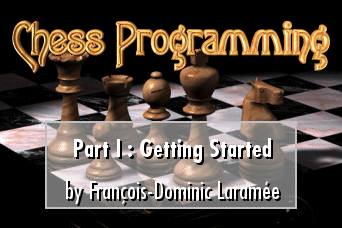11/10 - 11/12 @ Montréal, Canada
12/5 - 12/7 @ Shanghai, China
12/24 - 12/27
2/28 - 3/4 @ San Francisco, CA
More events...
2406 articles in the reference section.
Help us fight cancer!
Join SETI Team GDNet!

|
EvaluationFinally, the program must have some way of assessing whether a given position means that it is ahead or that it has lost the game. This evaluation depends heavily upon the rules of the game: while "material balance" (i.e., the number and value of the pieces on the board) is the dominant factor in chess, because being ahead by as little as a single pawn can often guarantee a victory for a strong player, it is of no significance in Go-Moku and downright misleading in Othello, where you are often better off with fewer pieces on the board until the very last moment. Developing a useful evaluation function is a difficult and sometimes frustrating task. Part VI of this series covers the efforts made in that area by the developers of some of the most successful chess programs of all time, including Chess 4.5, Cray Blitz and Belle. ConclusionNow that we know which pieces we will need to complete the puzzle, it is time to get started on that first corner. Next month, I will describe the most popular techniques used to represent chess boards in current games. See you there!
François Dominic Laramée, April 2000
|